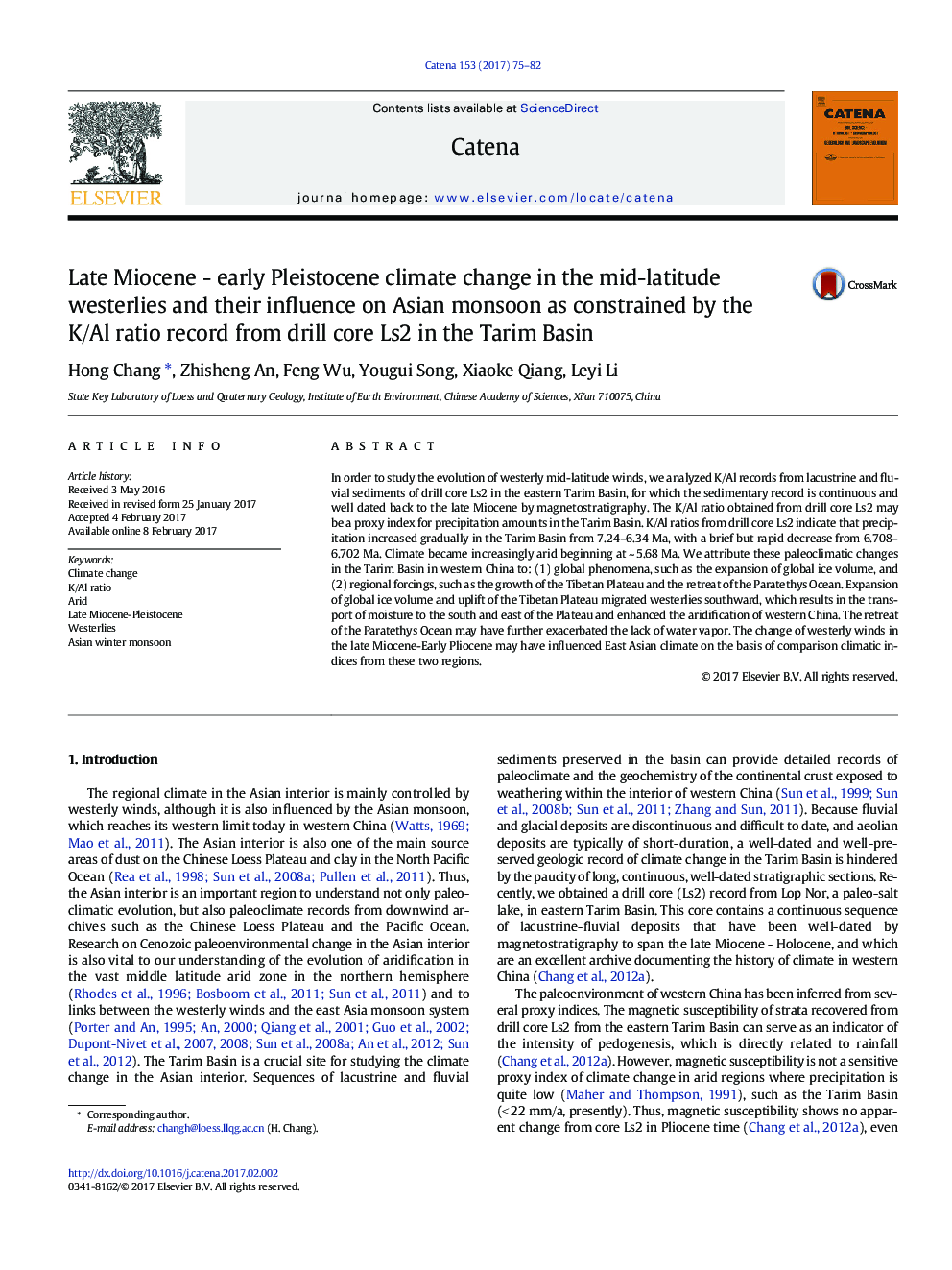| کد مقاله | کد نشریه | سال انتشار | مقاله انگلیسی | نسخه تمام متن |
|---|---|---|---|---|
| 5770151 | 1629201 | 2017 | 8 صفحه PDF | دانلود رایگان |

- Provenance underwent no obvious changes in the Tarim Basin since late Miocene.
- K/Al Ratios in sediments from the Tarim Basin are more sensitive to climate changes.
- Aridity increased since 5.682Â Ma in Asian interior.
- The aridification was possible controlled by the global and regional factors.
- Westerlies migration influenced the Asian winter monsoon since late Miocene.
In order to study the evolution of westerly mid-latitude winds, we analyzed K/Al records from lacustrine and fluvial sediments of drill core Ls2 in the eastern Tarim Basin, for which the sedimentary record is continuous and well dated back to the late Miocene by magnetostratigraphy. The K/Al ratio obtained from drill core Ls2 may be a proxy index for precipitation amounts in the Tarim Basin. K/Al ratios from drill core Ls2 indicate that precipitation increased gradually in the Tarim Basin from 7.24-6.34Â Ma, with a brief but rapid decrease from 6.708-6.702Â Ma. Climate became increasingly arid beginning at ~Â 5.68Â Ma. We attribute these paleoclimatic changes in the Tarim Basin in western China to: (1) global phenomena, such as the expansion of global ice volume, and (2) regional forcings, such as the growth of the Tibetan Plateau and the retreat of the Paratethys Ocean. Expansion of global ice volume and uplift of the Tibetan Plateau migrated westerlies southward, which results in the transport of moisture to the south and east of the Plateau and enhanced the aridification of western China. The retreat of the Paratethys Ocean may have further exacerbated the lack of water vapor. The change of westerly winds in the late Miocene-Early Pliocene may have influenced East Asian climate on the basis of comparison climatic indices from these two regions.
Journal: CATENA - Volume 153, June 2017, Pages 75-82